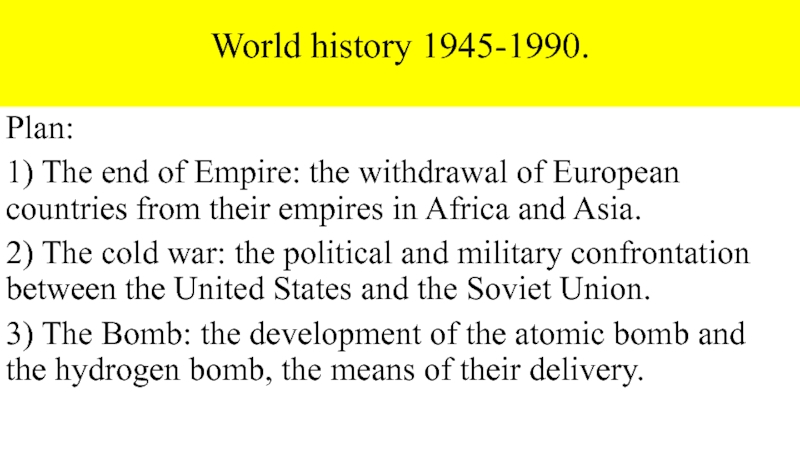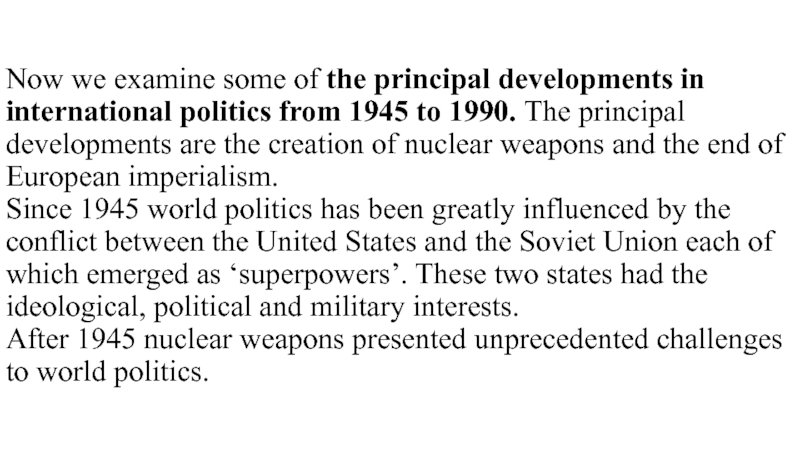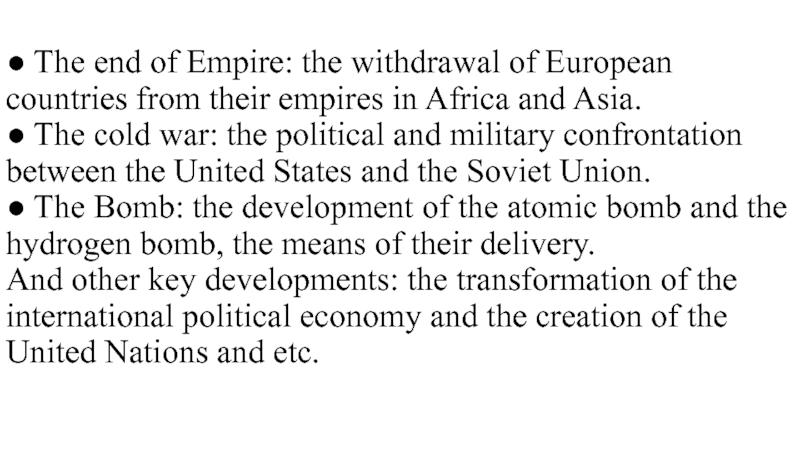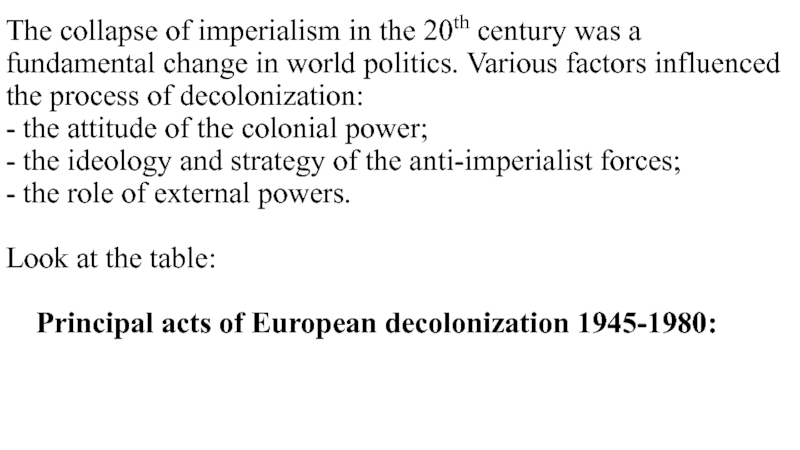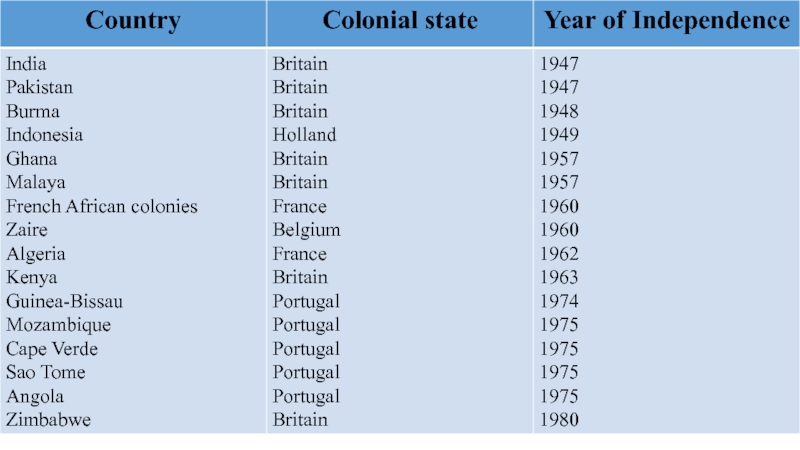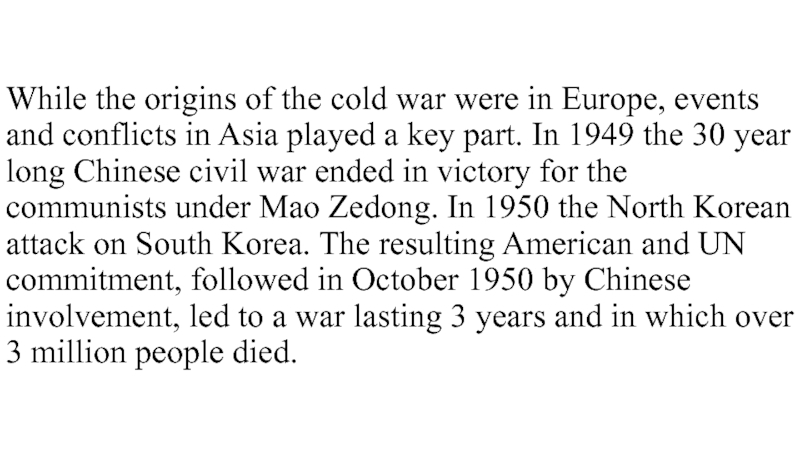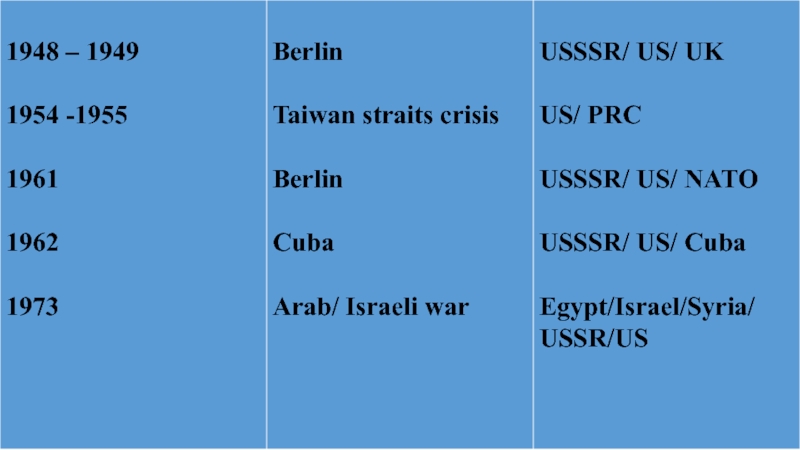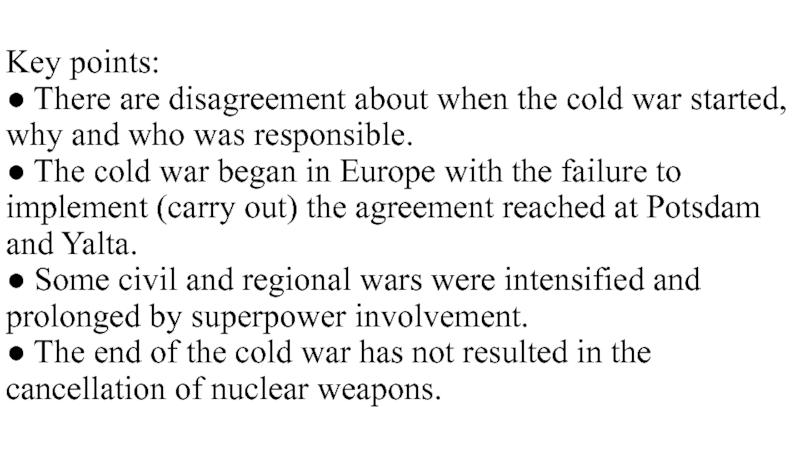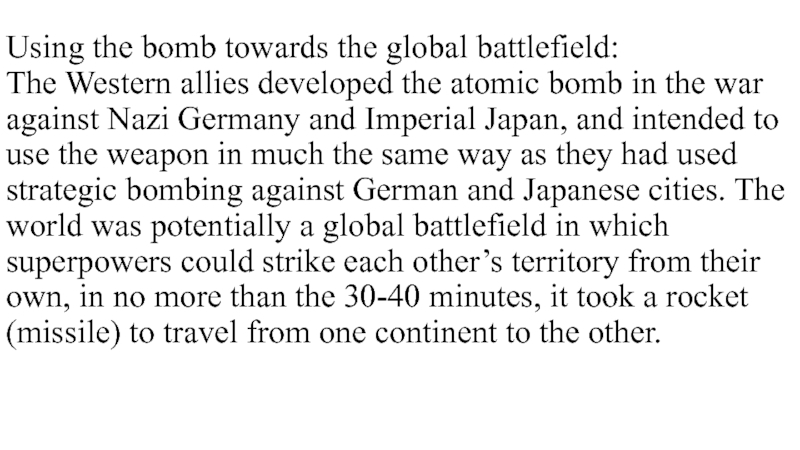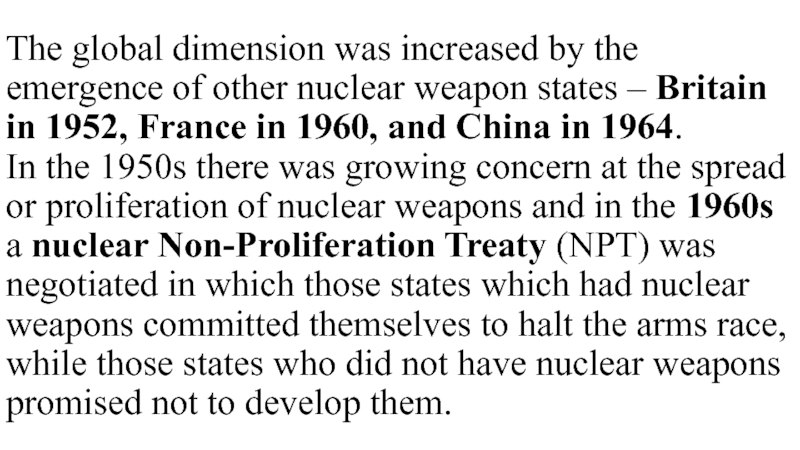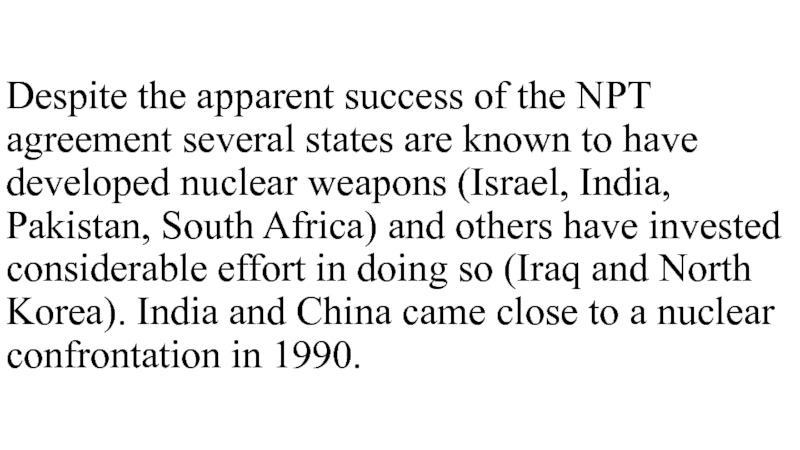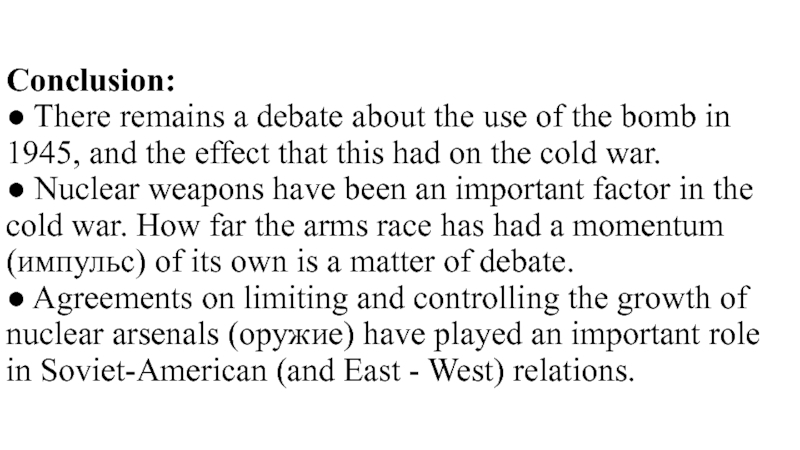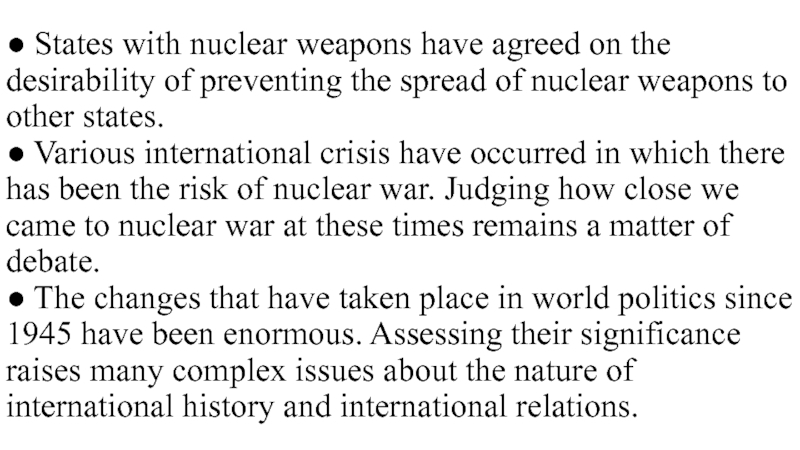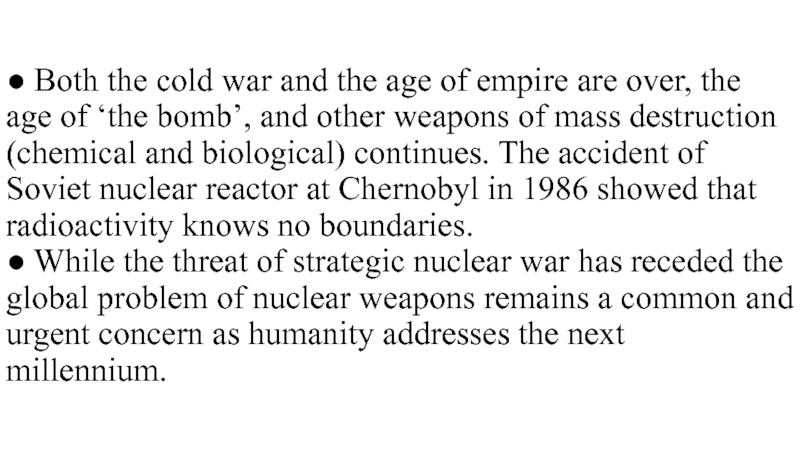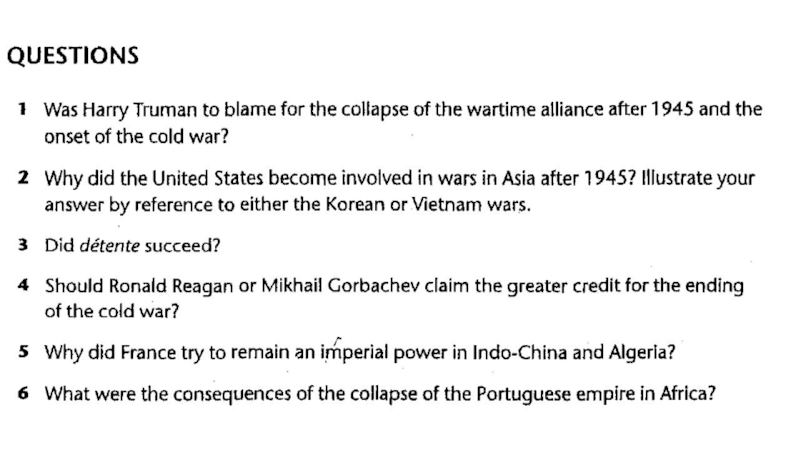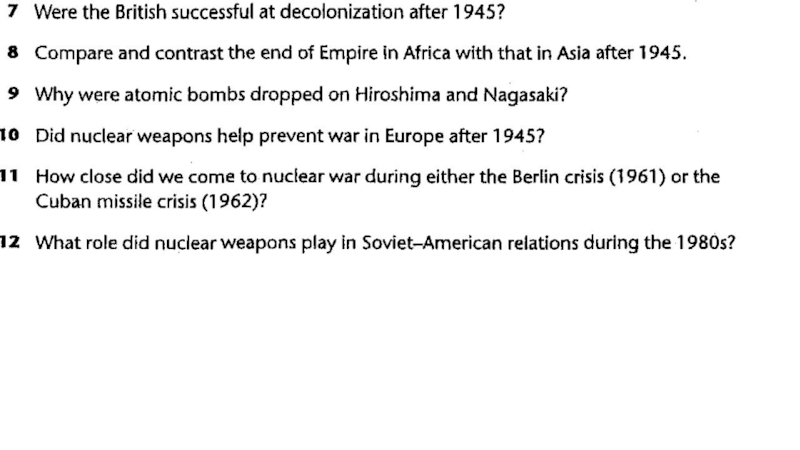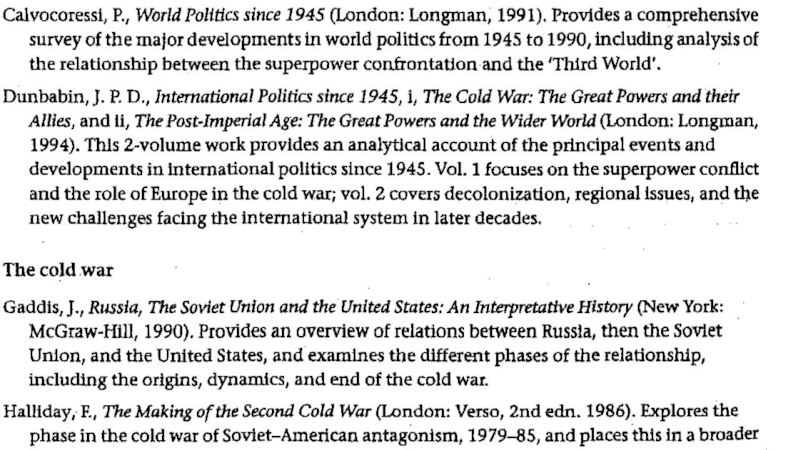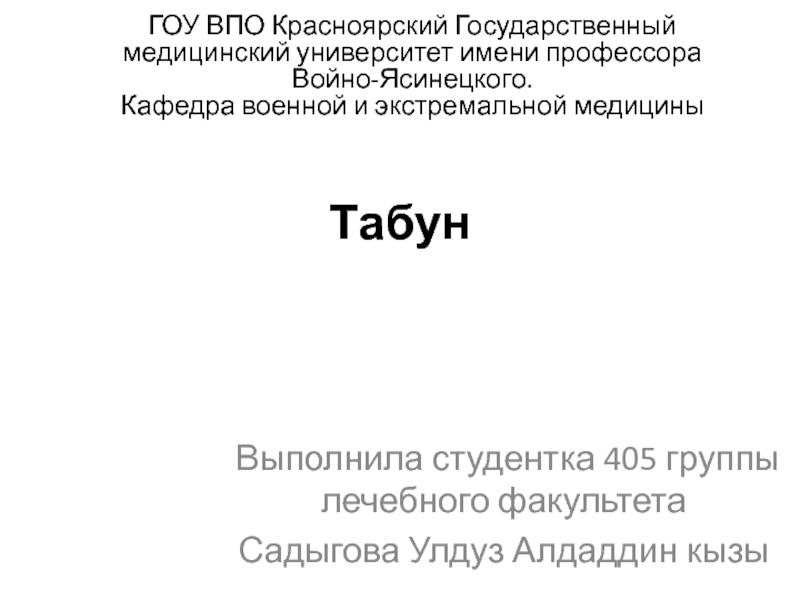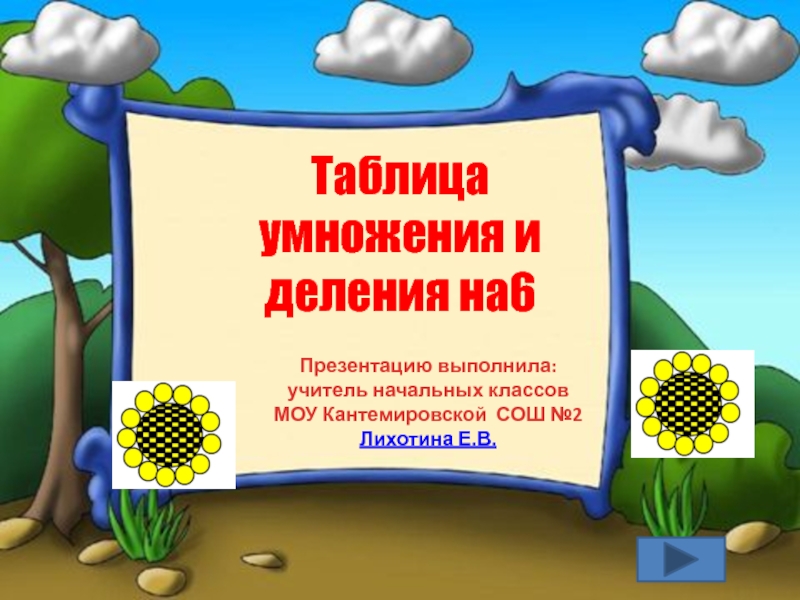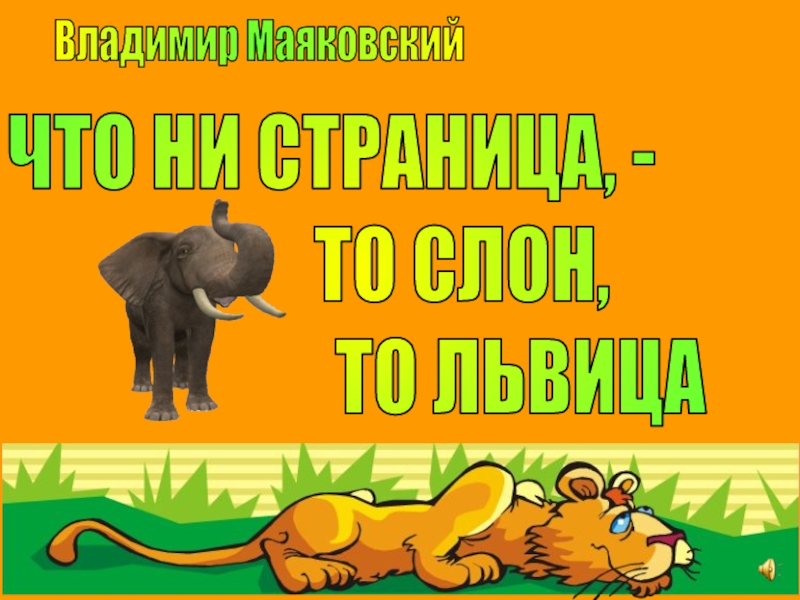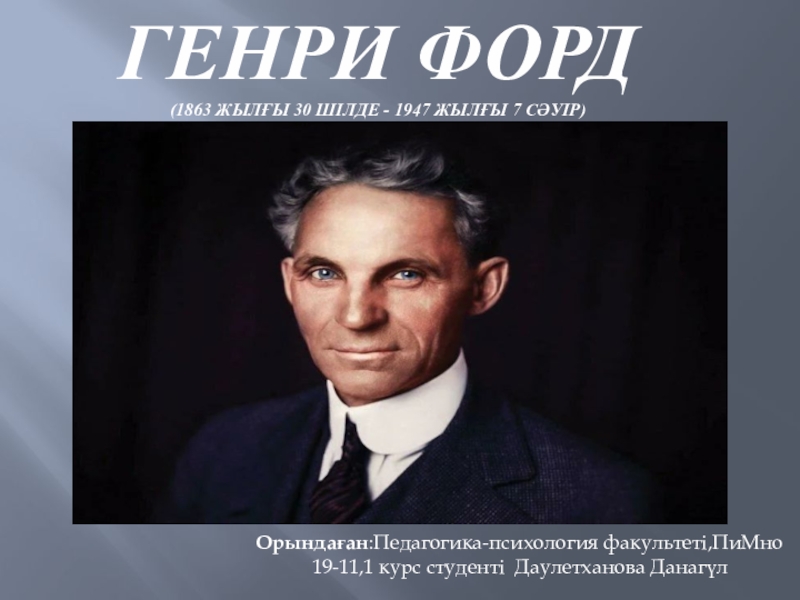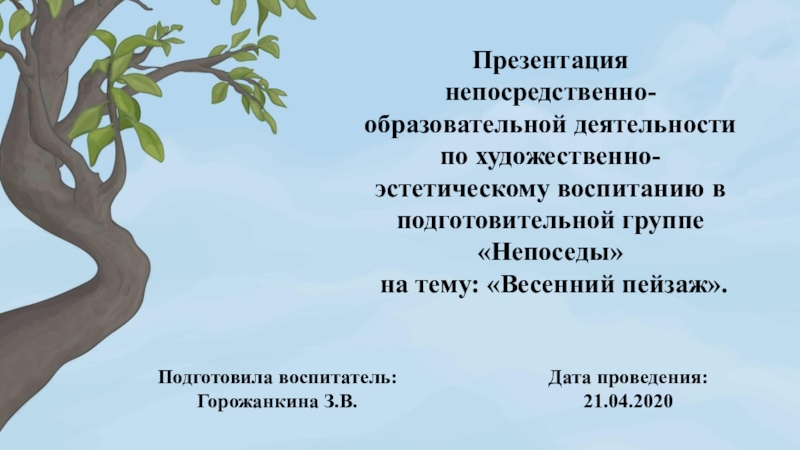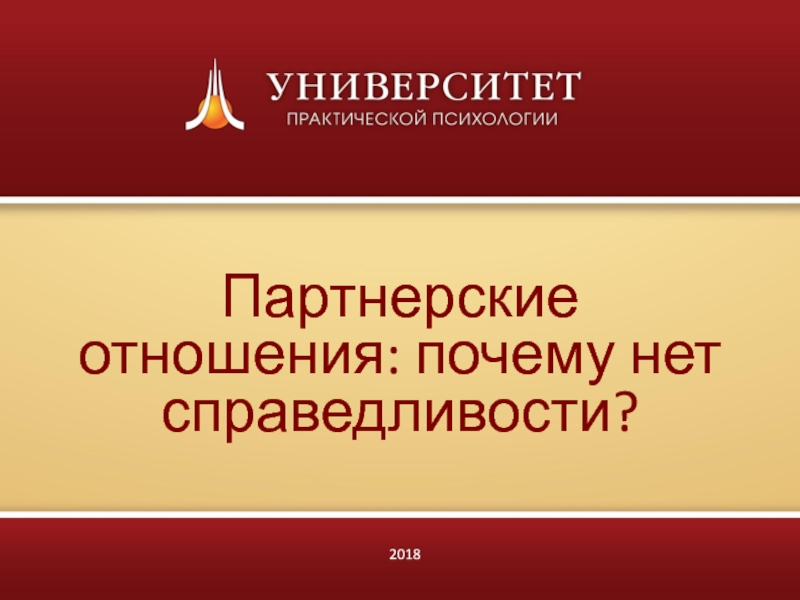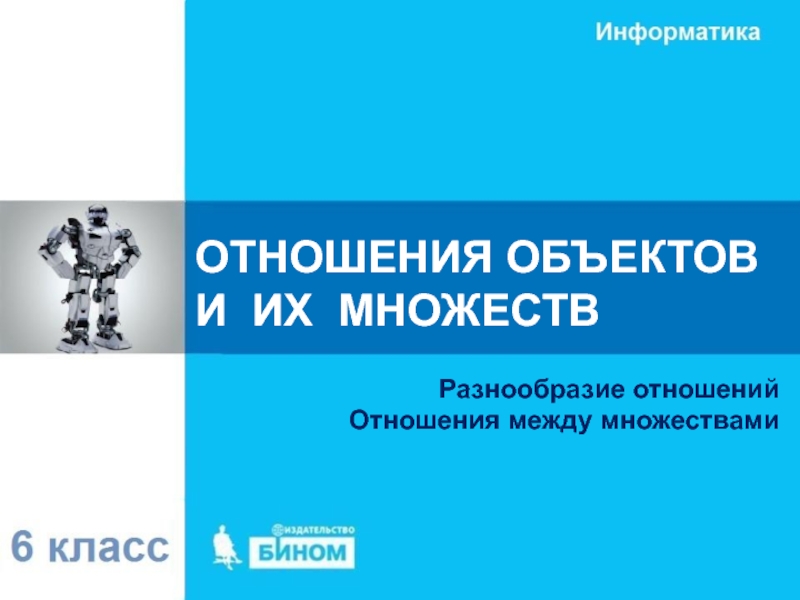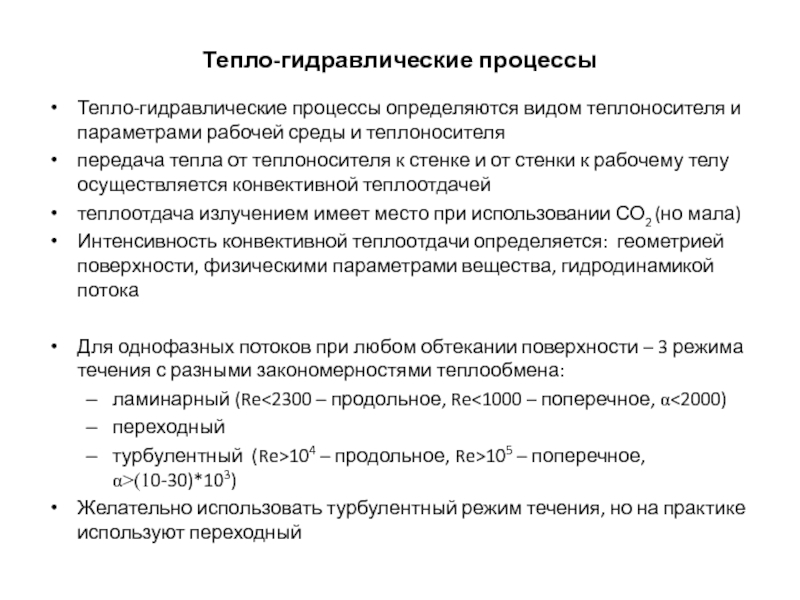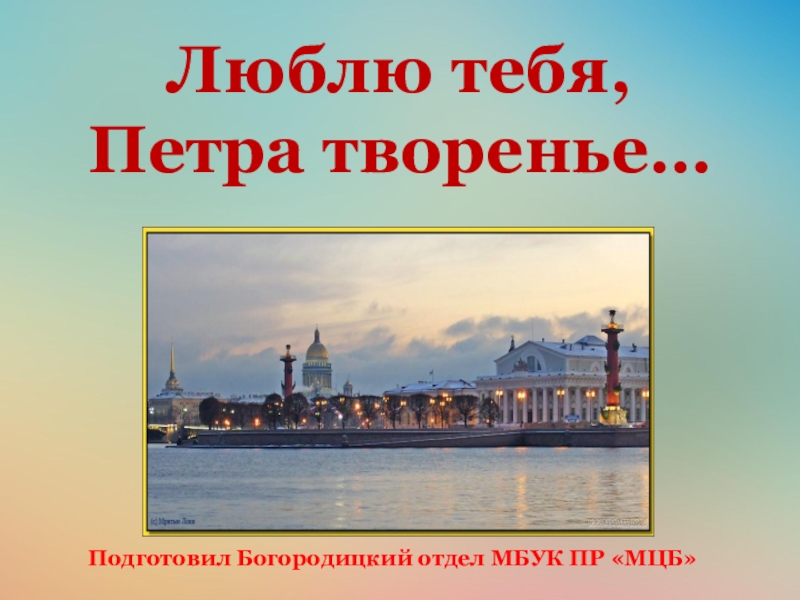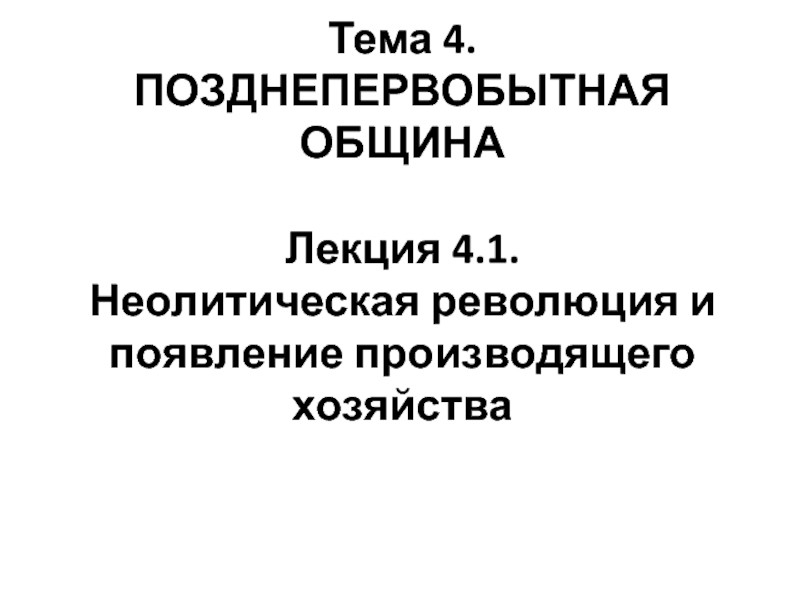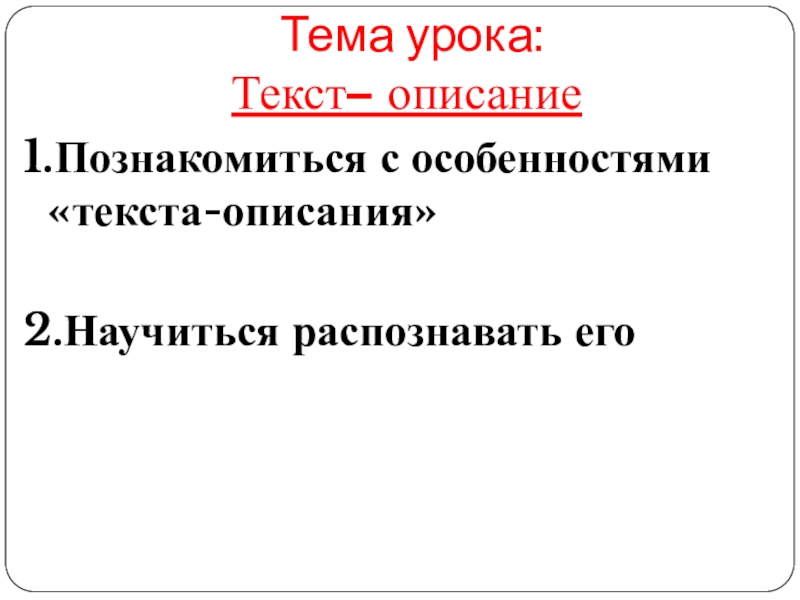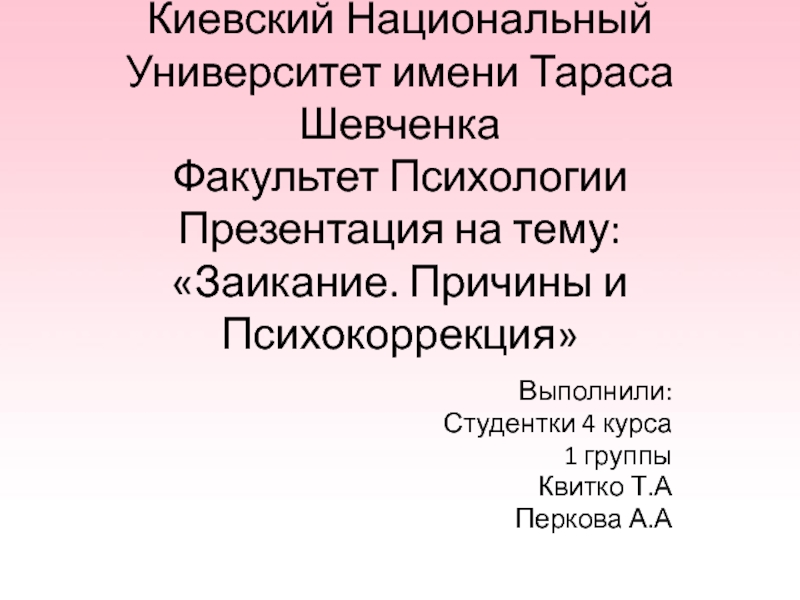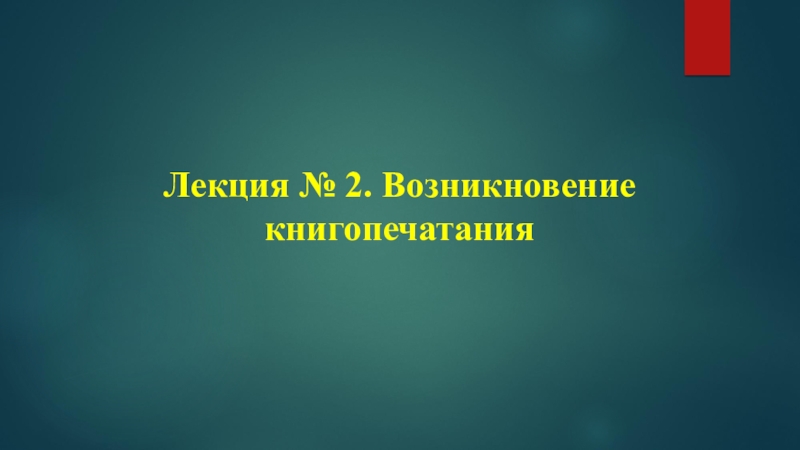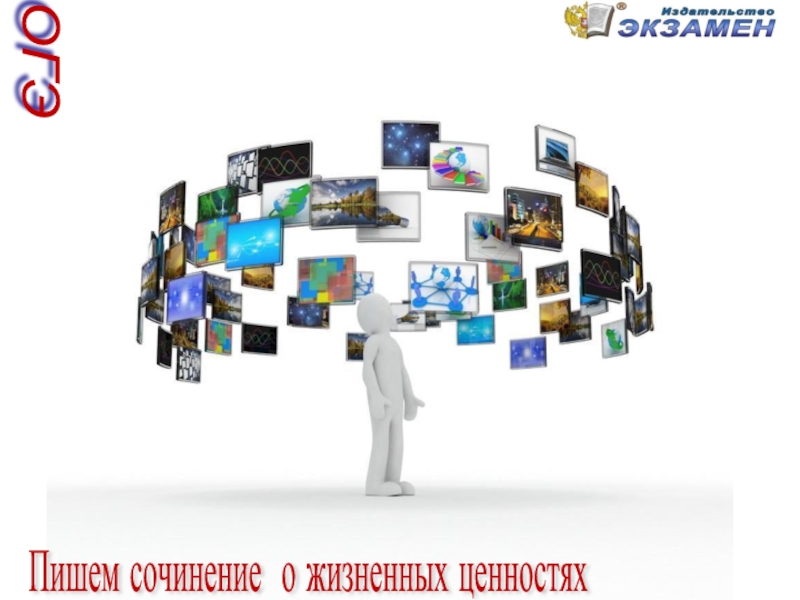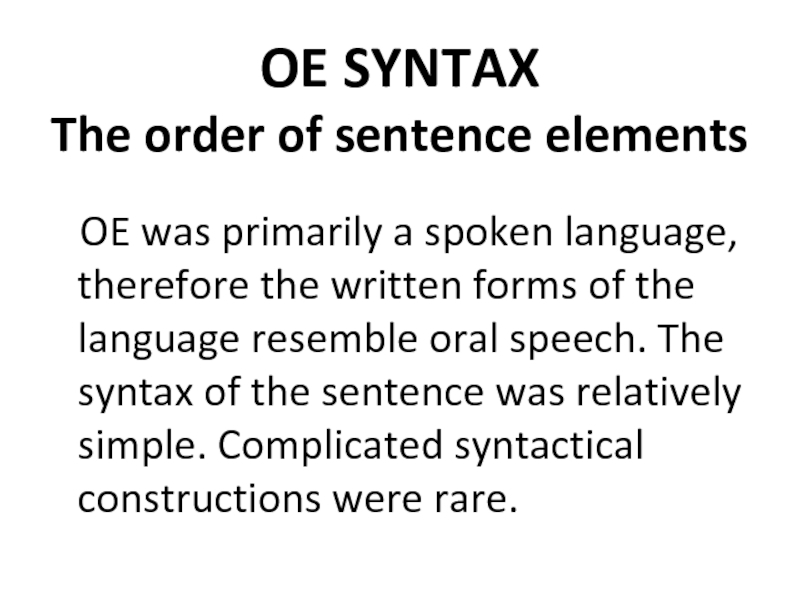Слайд 1World history 1945-1990.
Plan:
1) The end of Empire: the withdrawal of
European countries from their empires in Africa and Asia.
2) The
cold war: the political and military confrontation between the United States and the Soviet Union.
3) The Bomb: the development of the atomic bomb and the hydrogen bomb, the means of their delivery.
Слайд 2Main terms:
● principal developments in international politics;
● the withdrawal of
European countries from their empires;
● the development of the atomic
bomb and the hydrogen bomb;
● the creation of the United Nations;
● to wish to preserve (keep) their Empires;
● British withdrawal (moving sth. back);
● the onset of the cold war;
● conflict, confrontation and compromise;
● the global battlefield;
● proliferation (distribution) of nuclear weapons.
Слайд 3Now we examine some of the principal developments in international
politics from 1945 to 1990. The principal developments are the
creation of nuclear weapons and the end of European imperialism.
Since 1945 world politics has been greatly influenced by the conflict between the United States and the Soviet Union each of which emerged as ‘superpowers’. These two states had the ideological, political and military interests.
After 1945 nuclear weapons presented unprecedented challenges to world politics.
Слайд 4● The end of Empire: the withdrawal of European countries
from their empires in Africa and Asia.
● The cold war:
the political and military confrontation between the United States and the Soviet Union.
● The Bomb: the development of the atomic bomb and the hydrogen bomb, the means of their delivery.
And other key developments: the transformation of the international political economy and the creation of the United Nations and etc.
Слайд 5The collapse of imperialism in the 20th century was a
fundamental change in world politics. Various factors influenced the process
of decolonization:
- the attitude of the colonial power;
- the ideology and strategy of the anti-imperialist forces;
- the role of external powers.
Look at the table:
Principal acts of European decolonization 1945-1980:
Слайд 7Key points:
● Different European powers had different attitudes to decolonization
after 1945: some, such as the British, decided to leave
while others wished to preserve their Empires, in part – the French or the whole – the Portuguese.
● European powers adopted different attitudes to different regions and countries, e.g. British withdrawal from Asia much more quickly after 1945 than from Africa.
Слайд 8● The process of decolonization was relatively peaceful in many
cases; it led to revolutionary wars in others (Algeria, Malaya
and Angola), depending on the attitudes of the colonial power and the nationalist movements.
● The struggle for independence and national liberation became complicated in cold war conflicts when the superpowers and their allies became involved, e.g. Vietnam.
Слайд 9
The issue of when the cold war began, the most
historians focus on various events between 1945 and 1950.
1945-1953:
The onset of the cold war in Europe reflected failure to implement the principles agreed at the wartime conferences of Yalta and Potsdam. The future of Germany, and of various Central and Eastern European countries, as Poland, were issues of growing tension between the former wartime allies.
The first major confrontation of the cold war took place over Berlin in 1948. It had been left deep in the heart of the Soviet zone of occupation.
Слайд 10The American military deployment (development) was followed by the political
commitment (obligation) enshrined (keep) in the North Atlantic Treaty Organization
(NATO) treaty signed in April 1949. The key principle of the treaty – that an attack on one member would be treated as an attack on all – accorded with the principle of collective self-defense enshrined in Article 51 of the United Nations Charter. In practice, the aim of the alliance was the commitment of the US to defend Western Europe.
Слайд 11While the origins of the cold war were in Europe,
events and conflicts in Asia played a key part. In
1949 the 30 year long Chinese civil war ended in victory for the communists under Mao Zedong. In 1950 the North Korean attack on South Korea. The resulting American and UN commitment, followed in October 1950 by Chinese involvement, led to a war lasting 3 years and in which over 3 million people died.
Слайд 121953-1969: Conflict, confrontation and compromise.
Western Europeans depended on the US
for military security and this dependence deepened as cold war
confrontation in Europe was consolidated. The rearmament of the Federal Republic of Germany in 1954 sped up (speed) the creation of the Warsaw Pact in 1955. By the 1960s there were some 7000 nuclear weapons in Western Europe alone.
Look at the table: Cold war crisis
Слайд 141979 - 1986: ‘The second cold war’
The resulting period of
tension and confrontation between the superpowers has been described as
the ‘second cold war’. American statements on nuclear weapons and military intervention in Grenada in 1983 and against Libya in 1986 were seen as evidence of a new belligerence (state of war).
Look at the table:1974 – 1980.
Слайд 16Key points:
● There are disagreement about when the cold war
started, why and who was responsible.
● The cold war began
in Europe with the failure to implement (carry out) the agreement reached at Potsdam and Yalta.
● Some civil and regional wars were intensified and prolonged by superpower involvement.
● The end of the cold war has not resulted in the cancellation of nuclear weapons.
Слайд 17Using the bomb towards the global battlefield:
The Western allies developed
the atomic bomb in the war against Nazi Germany and
Imperial Japan, and intended to use the weapon in much the same way as they had used strategic bombing against German and Japanese cities. The world was potentially a global battlefield in which superpowers could strike each other’s territory from their own, in no more than the 30-40 minutes, it took a rocket (missile) to travel from one continent to the other.
Слайд 18The global dimension was increased by the emergence of other
nuclear weapon states – Britain in 1952, France in 1960,
and China in 1964.
In the 1950s there was growing concern at the spread or proliferation of nuclear weapons and in the 1960s a nuclear Non-Proliferation Treaty (NPT) was negotiated in which those states which had nuclear weapons committed themselves to halt the arms race, while those states who did not have nuclear weapons promised not to develop them.
Слайд 19Despite the apparent success of the NPT agreement several states
are known to have developed nuclear weapons (Israel, India, Pakistan,
South Africa) and others have invested considerable effort in doing so (Iraq and North Korea). India and China came close to a nuclear confrontation in 1990.
Слайд 20Conclusion:
● There remains a debate about the use of the
bomb in 1945, and the effect that this had on
the cold war.
● Nuclear weapons have been an important factor in the cold war. How far the arms race has had a momentum (импульс) of its own is a matter of debate.
● Agreements on limiting and controlling the growth of nuclear arsenals (оружие) have played an important role in Soviet-American (and East - West) relations.
Слайд 21● States with nuclear weapons have agreed on the desirability
of preventing the spread of nuclear weapons to other states.
●
Various international crisis have occurred in which there has been the risk of nuclear war. Judging how close we came to nuclear war at these times remains a matter of debate.
● The changes that have taken place in world politics since 1945 have been enormous. Assessing their significance raises many complex issues about the nature of international history and international relations.
Слайд 22● Both the cold war and the age of empire
are over, the age of ‘the bomb’, and other weapons
of mass destruction (chemical and biological) continues. The accident of Soviet nuclear reactor at Chernobyl in 1986 showed that radioactivity knows no boundaries.
● While the threat of strategic nuclear war has receded the global problem of nuclear weapons remains a common and urgent concern as humanity addresses the next millennium.
